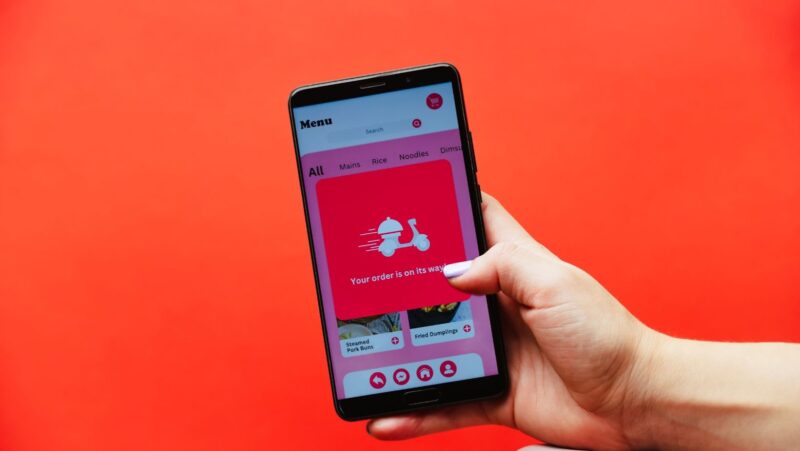
In the digital age, our self-perception and perception of others have been profoundly influenced by social media and digital advertising. This culture of physical perfection has created relentless pressure to meet unrealistic beauty standards.
Body image issues have become increasingly prevalent, fueled by unrealistic standards perpetuated online. As we move through this landscape, it’s crucial to understand the impacts of these digital forces and explore ways to foster a healthier self-image.
The Digital Mirage: How Social Media Shapes Our Self-Perception
Social media usage is skyrocketing globally. According to a recent Pew Research Center survey, in the U.S., 68% of people use Facebook, 47% use Instagram, and 27% to 35% use TikTok, highlighting its extensive reach. These social media platforms are often hailed as hubs for self-expression and connection.
However, they also serve as arenas where curated images of beauty and success are constantly showcased. The relentless stream of “perfect” bodies, often filtered and digitally enhanced, can create unrealistic standards that many struggle to meet.
The phenomenon of “Instagram face” and “TikTok body” exemplifies how digital filters and photo editing apps contribute to a distorted sense of beauty. Research shows that frequent exposure to these idealized images can lead to body dissatisfaction, especially among young people.
Numerous studies have indicated that excessive social media use is linked to negative body image and lower self-esteem.
In contrast, American Psychological Association research found that cutting social media use by 50% significantly improved outcomes for teens and young adults. This change occurred in just a few weeks. Participants reported better perceptions of their weight and overall appearance. It shows just how influential social media is to these young minds.
What Does “Instagram Face” Refer to?
“Instagram Face” refers to using filters and editing tools on Instagram to enhance one’s appearance.

This often results in a highly idealized and unrealistic portrayal of beauty. This phenomenon can create pressure to conform to these edited standards.
What is Meant by “TikTok Body”?
“TikTok Body” refers to the pressure and trends on TikTok related to specific body types. These trends often emphasize physical appearances that are popular or celebrated on the platform. It often includes trends or challenges that emphasize specific body shapes or fitness goals.
The Impact of Influencers and Celebrity Culture
Influencers and celebrities play a significant role in shaping body image ideals. Their carefully curated posts often highlight physical attributes that are difficult or impossible for the average person to achieve. This can create a skewed perception of what is normal or desirable.
A Dove survey reported by Newport Academy, covering 33,000 people in 20 countries, reveals immense pressure to conform to societal beauty standards. The survey found that two in five young girls feel pressured to change their appearance to match social media influencers. Furthermore, only 2% of women consider themselves beautiful.
These results show a troubling reality, revealing how pervasive and damaging the influence of unrealistic beauty standards can be on self-esteem and self-perception.
The Psychological Toll: Anxiety, Depression, and Eating Disorders
The negative effects of body image issues go beyond superficial dissatisfaction. Prolonged exposure to idealized body types can lead to serious mental health problems, including anxiety, depression, and eating disorders.
According to a survey reported by News-Medical, 52% of girls and 45% of boys engage in behaviors like skipping meals and excessive exercise. These actions are often linked to eating disorders. Most of these individuals have at least one social media account, with Instagram being the most common.
In response to these concerns, there has been significant backlash from parents against social media platforms. Legal actions have been taken against major corporations like Meta through the Facebook and Instagram lawsuit.
Consumer Notice reports that as of July 2024, 557 social media-related lawsuits are pending in multidistrict litigation No. 3047 in the Northern District of California. These lawsuits claim that social media companies have designed their algorithms to engage users in ways that are detrimental to their mental health.
Despite these claims, the companies have largely evaded responsibility, as noted by TorHoerman Law. Various studies and reports highlight that failing to address this issue could have severe consequences for future generations.
What are the Common Types of Eating Disorders?
The common types of eating disorders include:
- Anorexia Nervosa: Characterized by severe limitations on food consumption, an overwhelming fear of weight gain, and a distorted perception of one’s body.
- Bulimia Nervosa: Involves frequent cycles of overeating followed by purging activities, which can include vomiting, excessive physical activity, or using laxatives.
- Binge-Eating Disorder: Defined by recurring instances of eating excessive quantities of food with a sense of losing control, but without engaging in purging actions.
Reclaiming Body Image: Strategies for a Healthier Self-Perception
- Curate Your Digital Space: Take control of your social media feeds by following accounts that promote body positivity and realistic beauty standards. Engage with content that inspires and uplifts rather than diminishes your self-esteem.
- Focus on Health, Not Perfection: Shift the emphasis from achieving an ideal appearance to maintaining overall health and well-being. Embrace physical activities and dietary choices that make you feel good and support your health rather than striving for a particular body.
- Educate Yourself and Others: Awareness is key to combating body image issues. Educate yourself about the effects of digital media on body image and share this knowledge with friends and family. Promoting discussions about the unrealistic nature of online content can help reduce its impact.
- Seek Professional Support: If body image issues are affecting your mental health, consider seeking support from a mental health professional. Therapy can provide valuable tools and strategies for developing a healthier self-image and addressing underlying issues.
- Practice Self-Compassion: Challenge negative self-talk and practice self-compassion. Recognize and celebrate your unique qualities and achievements. Developing a positive self-image involves treating yourself with kindness and respect.
Moving Forward: Embracing a New Standard of Beauty
As we engage with the digital world, it’s essential to acknowledge its impact on body image and take steps to address it. Curating our digital experiences, focusing on health, and fostering self-compassion are essential for reclaiming a realistic and positive view of ourselves.
Additionally, immersing ourselves in body-positivity content can play a significant role in reshaping our self-perception. Following accounts and joining communities that embrace all body types and challenge beauty standards can help create a more inclusive and supportive environment.








